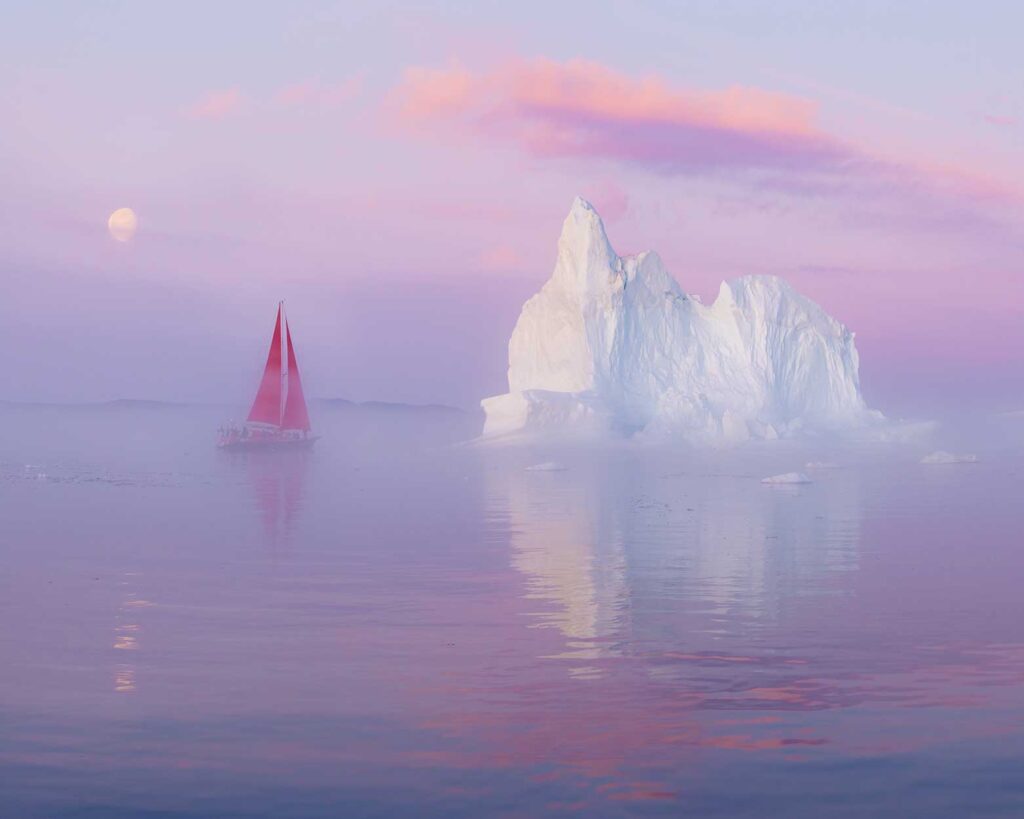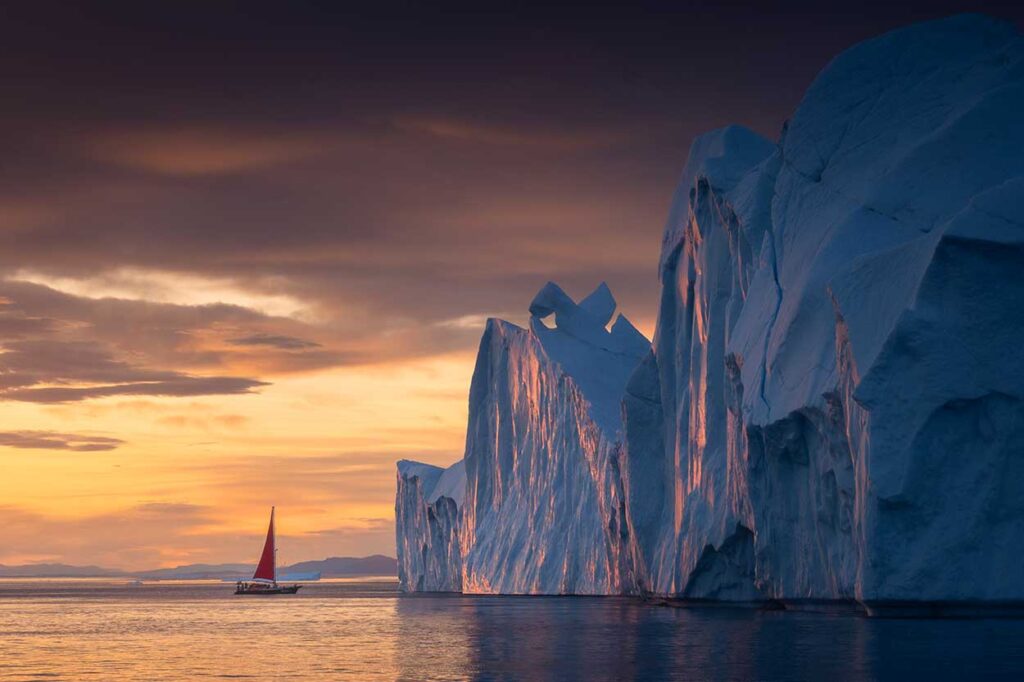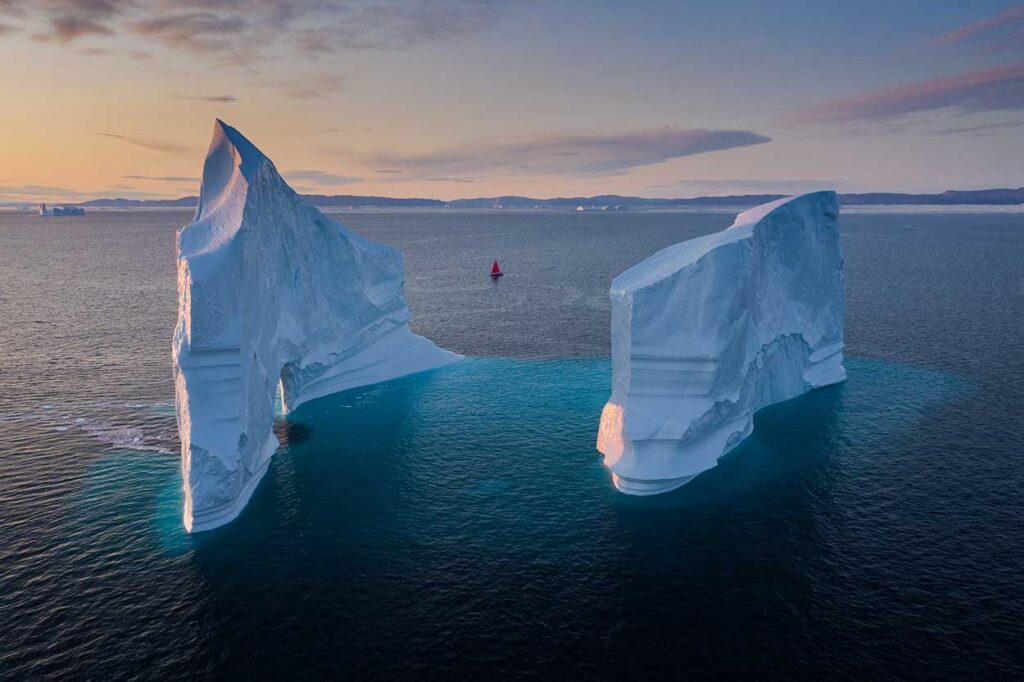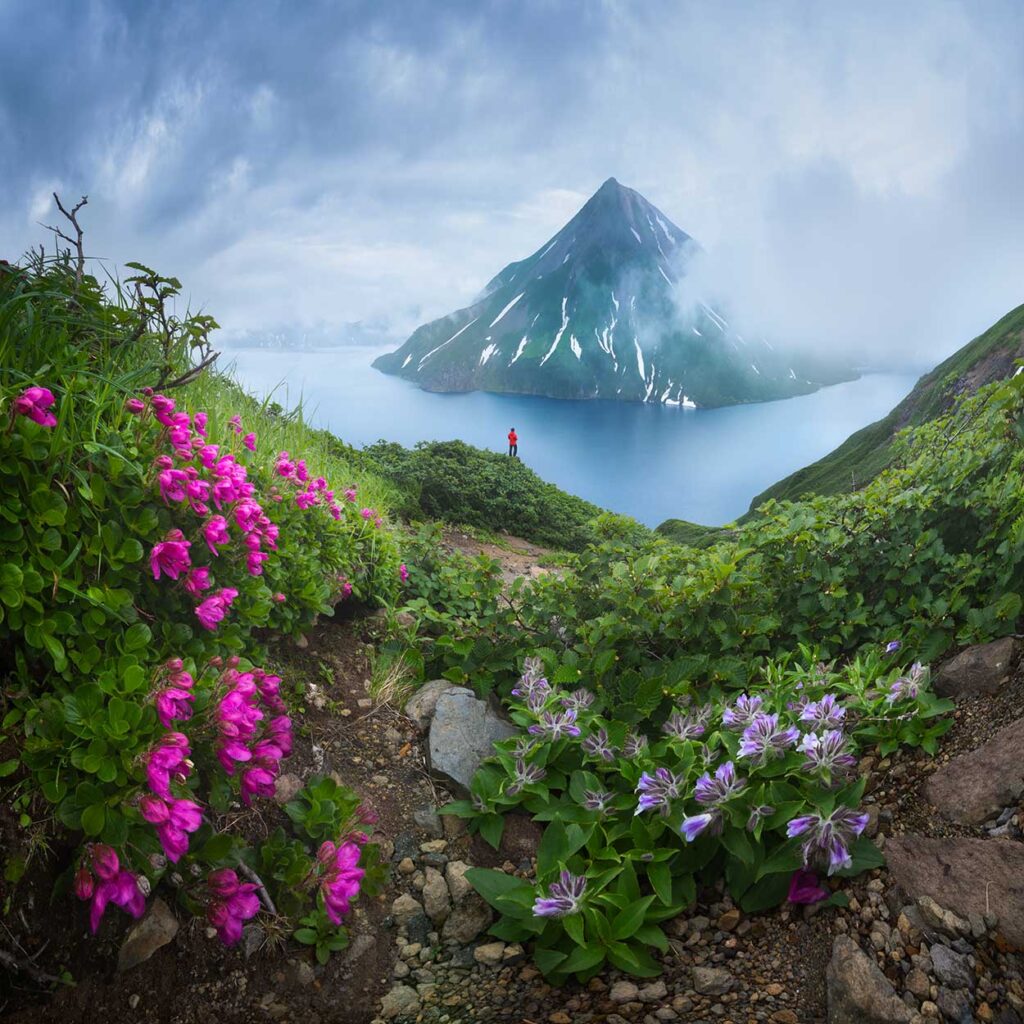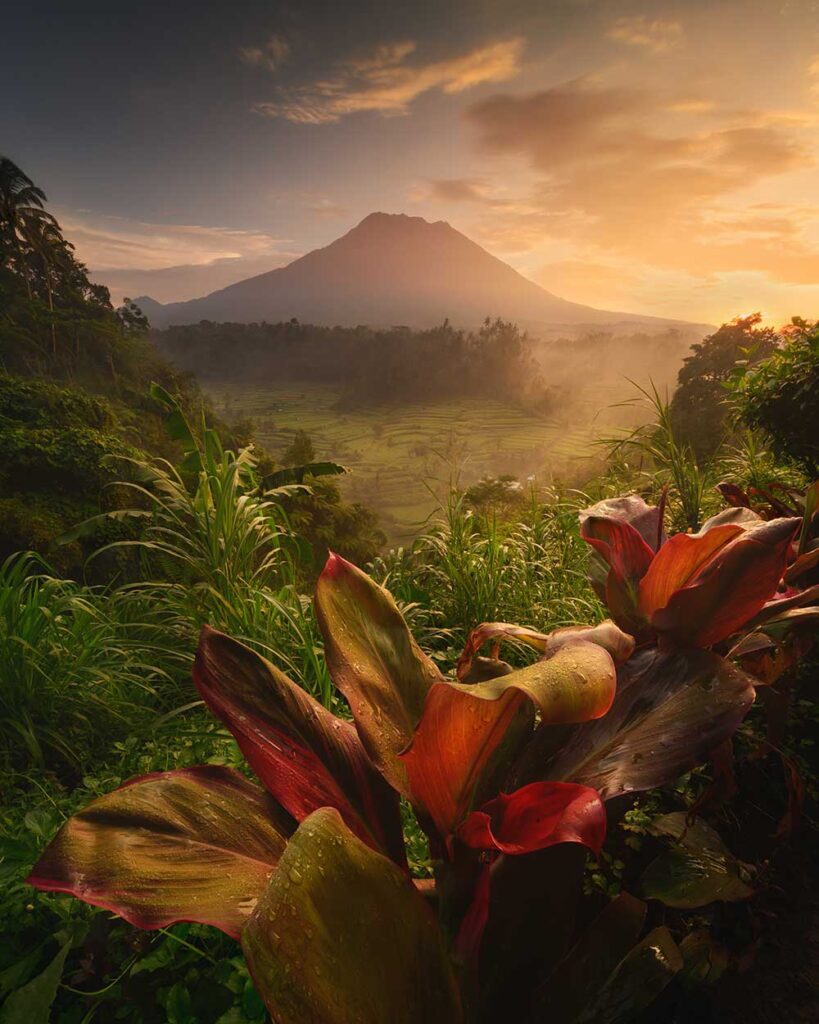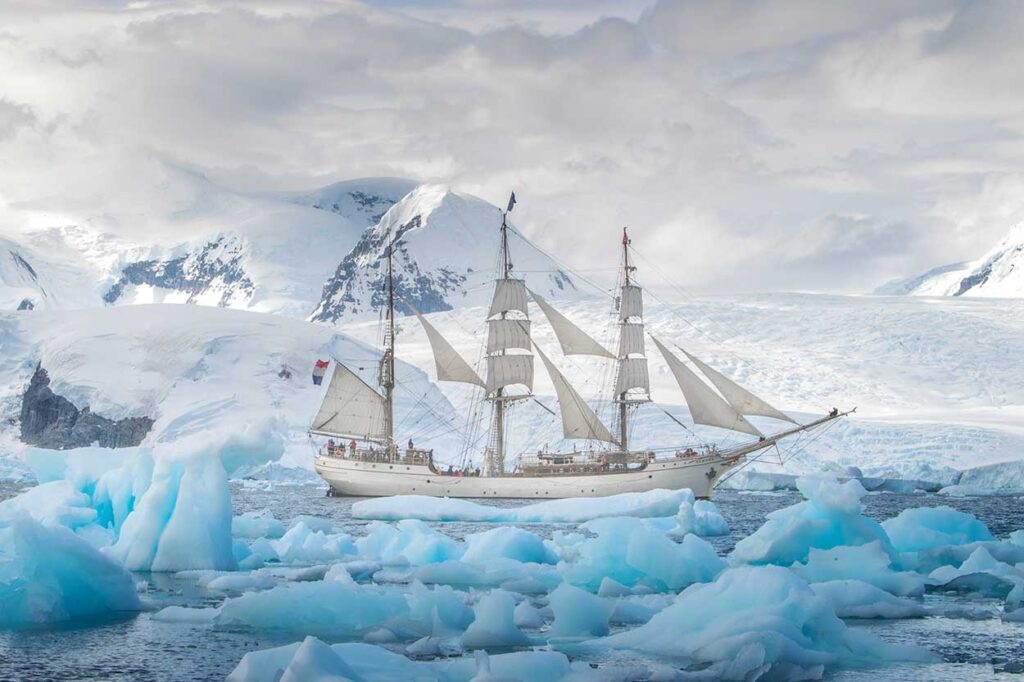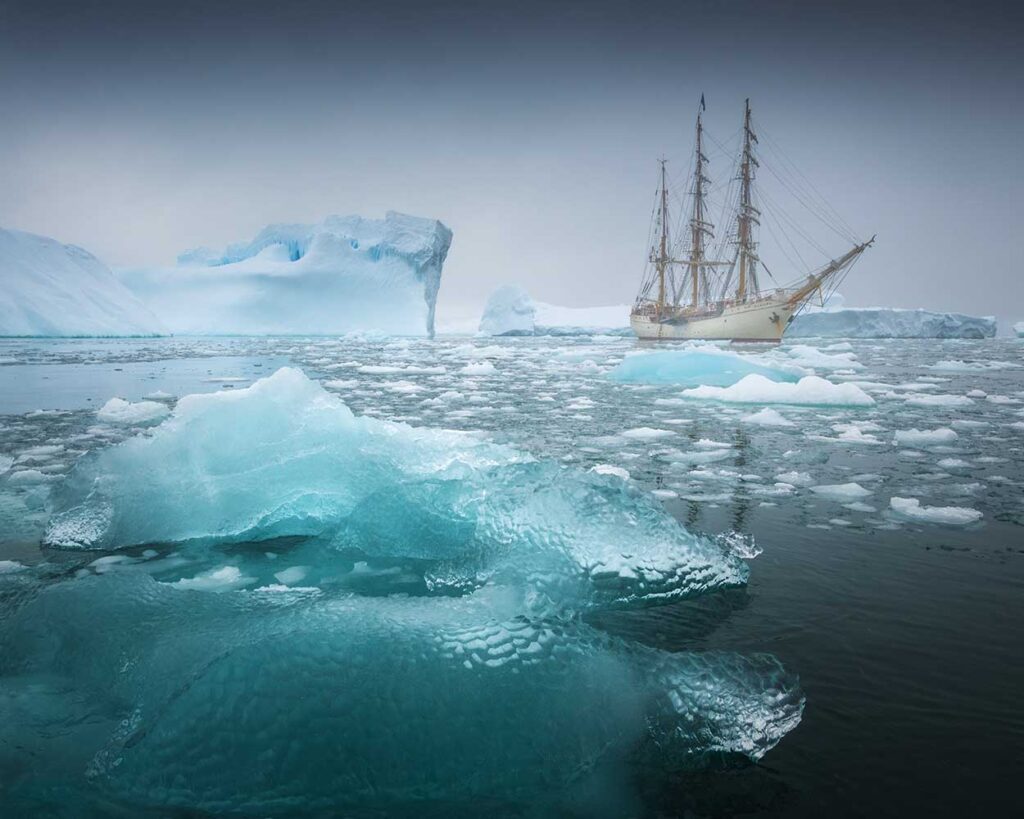An Exclusive Interview With
DANIEL KORDAN
BY ARIEL SU
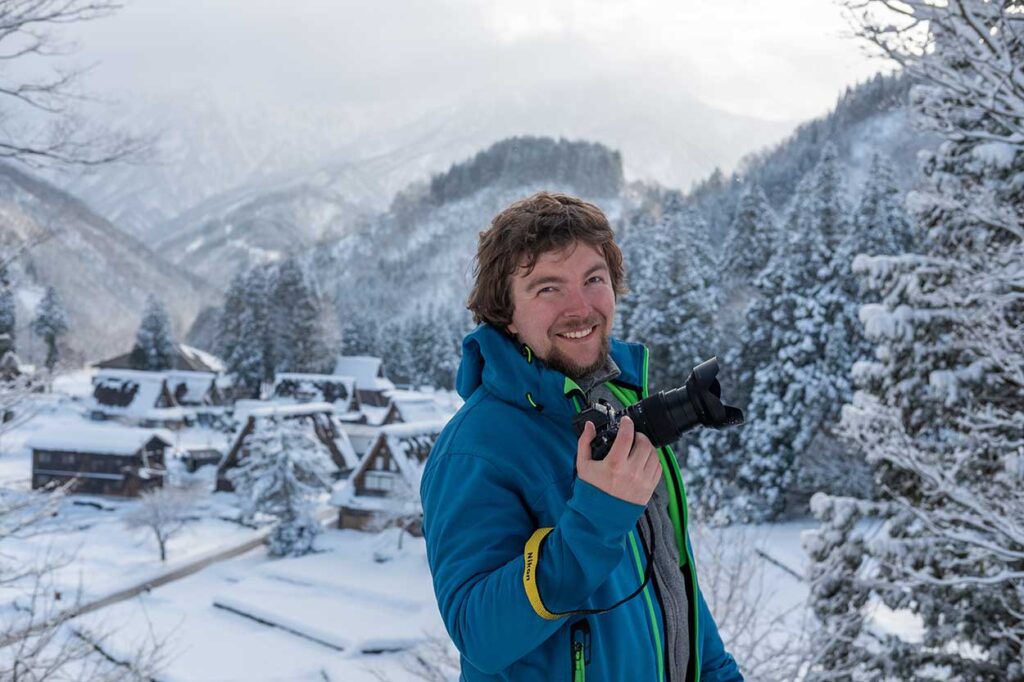
Daniel Kordan © All rights reserved.
Daniel Kordan is one of the most influential adventure and landscape photographers worldwide.
Daniel is an International award-winning photographer with significant clients such as Apple, Gazprom Neft’, S7 Airlines, and RedBull. Currently based in Tuscany, Italy.
Kordan grew up in Moscow and started his photography journey in early childhood while focusing mainly on nature and wildlife photography.
Through his university studies (Physics and Technology), he also gained experience in mountain climbing and hiking, guiding tourist groups in winter and in summer, and became a guide of photo-workshops and the chief editor of “Continent expedition” magazine. Today, Daniel is considered one of the most influential photographers globally by many social media followers (over 1 Million). His successful workshops continue to be the rising star in Nature and landscape fields.
During the past ten years, Kordan received respectable international awards, including the Golden Turtle’ 13 Nature nomination winner, National Geographic Russia contest 2013 winner, Best of Russia’13, ’14 ’15 winner, bestphotographer’13, Trierenberg Super Circuit award (best landscape photographer).
His work has been published in many international publications, including Digital SLR Magazine, U.K., Photography week, Photography MasterClass, National Geographic, Discovery, Photoworld China, Digital Photo (Bauer Media) magazines.
Daniel Kordan is an official Nikon. Gitzo and Lucroit ambassador. It is a great pleasure to feature an interview with such a fascinating photographer!
An Exclusive Interview With
DANIEL KORDAN
BY ARIEL SU
Lens Magazine: Thank you, Daniel, for this interview. We have so many questions about your future photography traveling workshops, but first, let’s focus on your background. Through your university studies in Physics and Technology, you also started your professional journey as a nature photographer. What led you to become one of the most experienced photographers in the world? What was your career path?
Daniel Kordan: Thank you, It’s a pleasure having an interview with Lens Magazine. In my early years, I attended an Art school. I was a student at this school for six years. I learned painting techniques, which undoubtedly extended my understanding of beautiful compositions and harmonious color palettes. I also learned to understand that finding and presenting unique moments depends on much more than pure technique. I learned to understand the value of intuition. It’s a central key to achieve impressive results. The Art studies really helped me to evolve this property. I’m grateful for this. In addition, my Art teacher told me to be bold with colors. He told me never to use black. I listened to him, so I actually never used black in my painting. Instead, I learned to bring out hidden details in dark parts of pictures.
When I had spare time, I was always eager to be in Nature with my friends. We were often driving on bicycles and swimming in the lake. Today, it’s strange to think about how different life was in these days.
So much has changed since.
About 10 years ago, I started as a guide in a mountain club. This gave me the opportunity to travel to amazing places. Many of these guiding tours enabled me to experience beautiful sunrises (above the clouds). This made a significant impact on me.
I had a desire to document and share these beautiful moments with others.
In addition, I met a lot of wonderful people and experienced different cultures. And that’s precisely what I love about it: your camera brings you to meet other people and new places.
It was hard for me to choose between working with science or photography. My strongest passion had always been science, and I admired doing scientific work. Compared to this, photography was more like pure passion.
After thinking thoroughly about the matter (working with physics or photographing as an occupation), the decision was made.
I choose to photograph and travel. It had become what I love most in my life. Now that I’ve become a full-time landscape photographer (and a Nikon Ambassador), I still don’t consider my photography workshops as work. It’s because I’m so emotionally involved. Photographing has become an essential part of my life.
L.M.: Tell us about your traveling photography workshops, are they mainly focused on the Lofoten Islands, Norway?
D.K.: I’m a partner in Iceland’s photo tours company. We have workshops in about 45 countries around the world listed on our website, making our company the biggest official tour operator focused primarily on photography tours and masterclasses. My most favorite ones are in Antarctica and Greenland. In Antarctica, we charter a 100 passengers Greg Mortimer super-modern vessel for our 2-week itinerary.
In Greenland, we have our 2 sailing boats with a red sail. Our guests navigate under red sails in the midnight sun with infinite 4-5 hours sunset and stay in a fantastic 4-star hotel. We always focus on comfort and maximum education possibilities for our guests.
“My most favorite place ever is Greenland. Small colorful villages with toy-like houses, whales, and enormous icebergs like giant ice castles. Moreover, ice is always changing and melting due to global warming.
So it’s essential to be able to document it and bring this problem to the world.”
– Daniel Kordan
L.M.: Where was your latest photography workshop, and what kind of experience do you try to give the participant’s photographers?
D.K.: My latest photography tour happened in Russia, Baikal lake, in January 2021. We traveled on ice by particular vehicle called Khivus – basically, it’s a soft base boat with a massive propeller on the backside, which allows you safely travel on ice. Baikal lake is a famous lake in Siberia with the clearest ice in the world – we always look for ice caves, bubbles, cracks, and small islands on the ice.
L.M.: If you had to choose your most favorite photography location in the world, what would it be?
D.K.: My most favorite place ever is Greenland. Small colorful villages with toy-like houses, whales, and enormous icebergs like giant ice castles. Moreover, ice is always changing and melting due to global warming. So it’s essential to be able to document it and bring this problem to the world.
L.M.: Your major key clients are Apple, Gazprom Neft’, S7 Airlines, and RedBull; what kind of projects did you work on for them?
D.K.: Apple used one of my photos from the Lofoten Islands in one of the global campaigns to launch the MacBook Pro. Gazprom Neft involved me as a freelance journalist to document people’s lives in the northern cities working on social projects helping improve people’s living conditions. Other brands are my permanent partners to support with photography.
L.M.: You are the Nikon, Gitzo, and Lucroit ambassador.
Tell us about this collaboration with these influential brands and what led you to this position as the ambassador?
D.K.: These mentioned brands involve me in campaigns promoting new products. Basically, before the new lens or tripod is released, I test it in some challenging conditions and bring back extraordinary images, reviews, and films. Later on, the brands using these media to promote the product on the release date or receive feedback from me about possible improvements. Brands contacted me themselves; I believe it depends on overall reputation and marketing abilities besides photography – social reputation following is also involved.
L.M.: Here on Lens Magazine, we almost don’t focus on the gear, but now, in Nature/ Wildlife and Landscape fields, we see it as a must question. What equipment are you using? Do you have a unique technique? Can you describe your post-processing workflow?
D.K.: Actually, I am not a gear lover. I talk much either about compositions, light, and processing techniques. Still, it’s a fact that I am totally dependent on well-functioning high standard equipment, which helps me in most challenging conditions.
Here are some facts:
I mainly use only three lenses in my photography (and I’m thrilled with these lenses). It can be entirely appropriate to use expensive equipment. But not at any cost or at any time.
I often get surprised when I see people use top-notch gear just to publish mainstream photos on social networks. If you use expensive gear, I think you clearly need to understand why.
For my own sake, I use top-notch gear to produce high-quality prints in large formats. However, if you are a reporter and, for instance, only publish pictures in magazines or at your blog, then (I think) it’s more adequate to use a small mirrorless camera with interchangeable lenses.
The final result will be satisfactory. For my choice of equipment, reliability is one of the most important criteria. That’s why I use Nikon in the most challenging conditions around the world.
Camera bodies, lenses, filters, etc.
Bodies: Nikon D810 and Nikon Z 7 Lenses: Nikkor 14-24, 24-70, 70-200 mm
Favorite lens: If I had to choose, my most favorite lens would be a Nikkor 14-24, f/2.8. In my opinion, this is a marvelous piece of photographic equipment.
Favorite filters: I like to use filters, which allow me to do a bit less work and participate in contests (which prohibit composite images (i.e., bracketing)). I use ND 3,6,10 stop and GND 4 stop soft, polarizer. For my 14-24 Nikkor, I use the Lucroit 165 mm system.
Other equipment: Gitzo tripod and Gitzo backpack. Besides, I use an L-plate + nodal slide rail for my panoramic images (or panoramic head).
Preferred protection bags: For safe storage of my cameras and lenses, my favorite is Gitzo Adventury.
For tripods on hikes and light conditions, I use Gitzo traveler. In addition, I use Gitzo systematic for harsh conditions.
(for instance, I used it to protect against the winds of Patagonia and the North Sea waves in Lofoten).
L.M.: Did you have any dangerous experience during a photography traveling / workshop?
D.K.: I always keep out of dangerous countries or adjust my itinerary not to go in the storm. So the trips I take are very adventurous but still very safe. Our company always has a safety-first policy and never puts people at risk; not a single photo worth the risk.
L.M.: On your website, we can find a large selection of photographs for purchase, in various sizes and different print techniques. Is it a significant part of your income? are you featuring your art in galleries and art fairs worldwide?
D.K.: Yes, I have my own print shop on my website with very high-quality images and a selection of photos from Mongolia and Kenya as signed limited edition prints, also featured at Lumas galleries worldwide.
L.M.: Do you have any advice or a tip to give to our emerging/young photographers trying to succeed in the field?
D.K.: Your journey is not only a trip to a location. Instead, try to create it as a long-lasting project with several goals and ideas to be tested. The goal might, for instance, be an album, an ecological project, or an exhibition.
Work at a particular location for a long time (returning there in different seasons or different years). You’ll soon get the advantage of being more recognizable by both photographers and local people.
I think this is something you should think about. You should publish as much as possible. For instance: Try to write interviews, post your work on social media, popular blogs, and photography websites. By exposing yourself, you will get more feedback. Also, request critique from fellow photographers. Sadly, (nowadays) I think it is almost impossible to get constructive comments. For that reason, it’s essential to find a person who’ll kick you if you get stalled.
Finally, I would like to remind you that it takes a long time to make your portfolio “work.” Therefore you have to work very hard every day to achieve your dream.
L.M.: What kind of workshops are scheduled for 2021? Where will you travel in the upcoming workshop, and what experience is waiting for the participant’s photographers?
D.K.: You can always check Danielkordan.com or Iceland-photo-tours.com for upcoming workshops.
In 2023-2024 I planned to lead our Antarctica Fly/Sail Photography, Red Sails in Greenland and many more. Everyone is very welcome to join!

